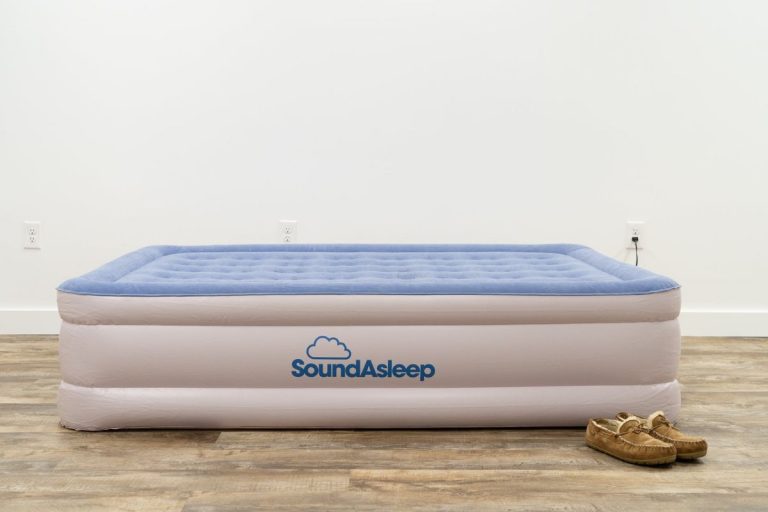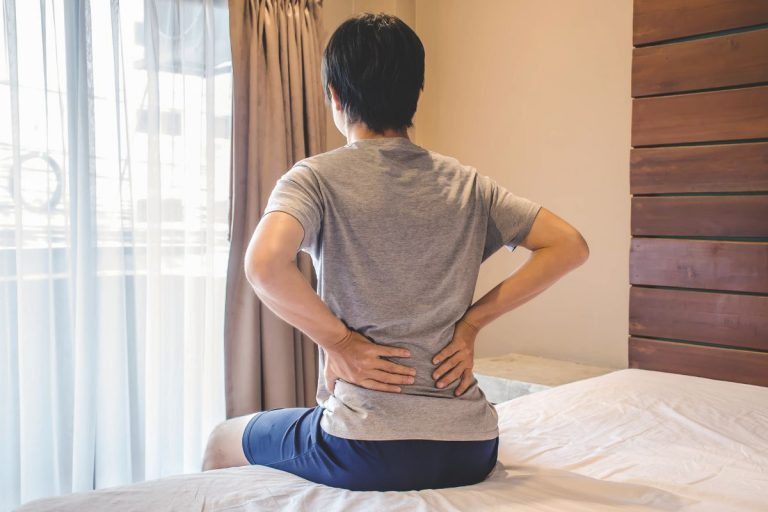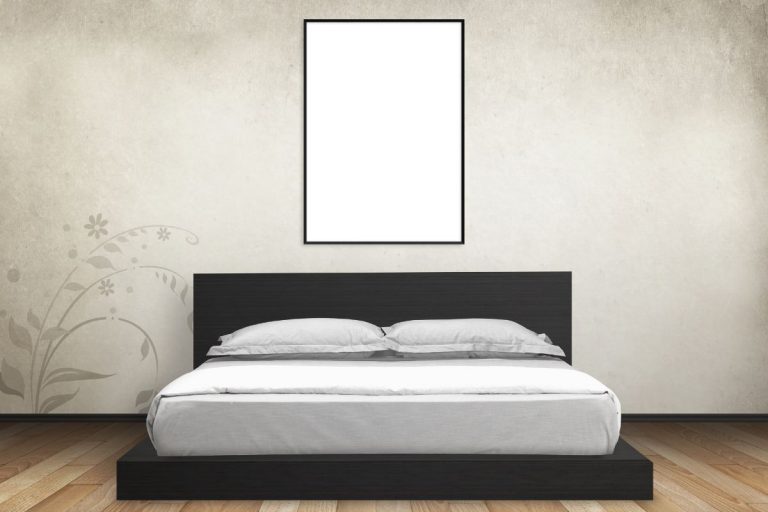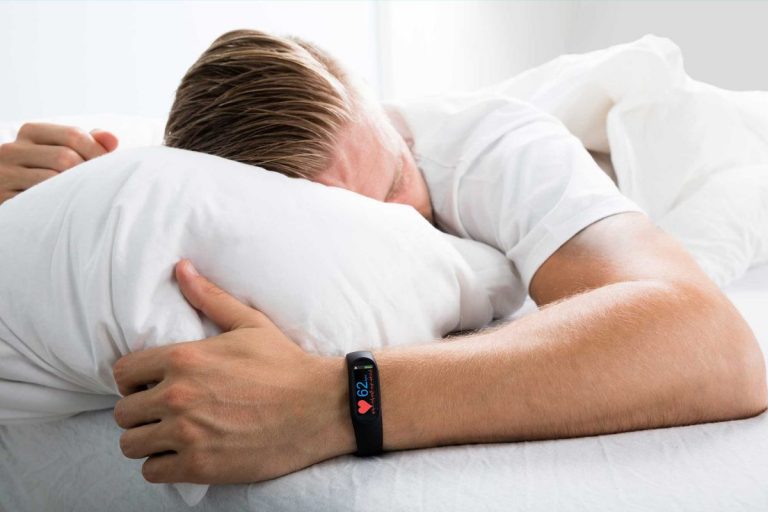According to a survey by Consumer Reports, as many as 68% of all Americans have some trouble sleeping well at least once each week. That is over 150 million Americans that couldn’t seem to get some shuteye on at least one day last week.
Whew!
That is a lot of sleepless nights, and it doesn’t have to be that way.
With a few proactive steps to improve your sleep hygiene, you can get back to experiencing quality sleep every night.
Sleeplessness can stem from several poor lifestyle practices like lack of exposure to sunlight during the day, excessive napping, an inconsistent sleep schedule, and poor sleep hygiene.
Underlying conditions like depression, anxiety, physical pain, and side effects to prescription medications, as well as sleep disorders like restless leg syndrome, sleep apnea, and narcolepsy, may also contribute to insomnia.
However, many sleepers who are having sleep trouble are not immediately concerned with the long game. Yes, you can gradually improve your sleep life, but how do you get some shuteye right now?
Whether you’ve just gotten up in the middle of the night after an interruption and can’t get back to sleep, or its bedtime, you tuck yourself in, but you can’t seem to find no rest, one of the worst things you can do is to try to force yourself to sleep.
Sleep, like some of the best things in life (Respect, happiness, love) is backward—trying too hard to get what you want often, has the opposite effect.
A more effective way to go about things is to try out techniques that help you unwind. Being relaxed is a significantly more achieved goal, and once you get there, sleep often occurs naturally, and happens fast.
Here is an exhaustive list of some of the most effective techniques for getting yourself into an unwinded, sleep-ready state fast, indirectly “forcing” yourself to sleep.
9 Fastest Ways to “Force” Yourself to Sleep
If you find yourself tossing and turning, unable to get any shuteye, try some of these tips and techniques to find out what works for you. Everyone is different. What may be the perfect fit for one may have little to no effect on you.
However, we are confident that every sleeper can find something for them here.
Recommendation
Many of these techniques will take only a few seconds, and you can do them in bed. However, for those that require more than 5 minutes, we recommend that you get out of bed, go to another room, and try it out. Only return to your bedroom when you feel sleepy again.
When you have trouble sleeping, lying in bed is often one of the worst things you can do. Lying on your mattress and trying to force yourself to sleep can increase sleep anxiety and worsen the situation further.
1. Try the Military Method
During WWII, the U.S. Military had to square up a significant problem—its pilots were racking up massive amounts of stress under the intense pressures of battle, causing a dramatic increase in fatal mistakes and avoidable casualties.
The military called in support to help curb this problem. They invited a sleep researcher and educator, Naval Ensign Bud Winter, to help create a program to help the pilots achieve better mental relaxation, and by extension, get better sleep.
The result of this collaboration was a course that aimed to help these combat aviators attain deep relaxation, and go to sleep in two minutes, irrespective of the condition of the external environment.
You can take advantage.
In his book, Relax and Win, Winter detailed his program, which taught the Naval aviators to relax both physically and mentally. He later went on to use the same application to coach track athletes in a legendary coaching career.
Note:
Bud Winter was a legendary coach of the Spartan Track and Field teams at San Jose State University for 33 years. During his stay there, he coached 102 NCAA All-Americans, 27 Olympians, and 37 world record holders.
Here is a simplified version of his program. You can try this version today to improve your sleep onset times.
Steps
- Lying down in a comfortable position, close your eyes and ease out any wrinkles in your forehead;
- Next, unclench your jaw and relax the rest of your head including your scalp, tongue, lips, and all of the muscles in your face;
- Now, loosen your shoulders, letting them hang low, as low as they’ll go;
- Take one deep breath. Hold it, then exhale. Let your chest sag with zero effort to hold it up on your part, then breathe slowly. This exercise, when done right will completely rid your chest of any tensions;
- Let go of your limbs and calves, unclenching them and easing all tension. With this step, your entire body will have reached a state of complete physical relaxation
Once you complete the visible part of the exercise, immediately jump into the mental component to help relax your mind and complete the experience. Winter’s program offers three ways to achieve this goal:
- Imagine the most relaxing scene you can dream up. A good example is to visualize watching a blue sky with floating clouds from the bottom of a canoe that is drifting passively on a calm, picturesque lake. Concentrate on this picture and hold it for ten seconds;
- Alternatively, you can envisage yourself in a slow-rocking black hammock in a world of absolute blackness;
- The third option is to repeat the words “don’t think” for ten seconds while blocking out all other thoughts
Whichever path you take, before the end of the routine, you should be fast asleep.
2. Try Progressive Muscle Relaxation
In the early 1920s, physiologist and physician in internal medicine and psychiatry, Edmund Jacobson, introduced a technique for reducing anxiety and stress that quickly gained prominence and is still a recommended option today.
His technique, progressive muscle relaxation, was recently validated by one 2008 review of 10 years of observational studies.
Progressive muscle relaxation involves using alternating tensing and relaxing actions in all of the body’s main muscle groups. While this technique solely focuses on reducing stress and helping you relax, one positive byproduct is that, when done right, it can facilitate rapid sleep onset.
Here is how to get asleep fast with progressive muscle relaxation.
>>Steps
Preparation: lie down in a quiet environment and cut all potential distractions, including any tight-fitting clothing. Place your hands beside you or on your laps, then slowly take a few even abdominal breaths.
Once you complete this step, you can proceed to take turns relaxing and tensing your muscle groups.
Head: Tense up your forehead muscles and hold for 10 seconds. As you keep the tense, focus on the feel of the muscles as they progressively get tighter. Then release the tension gradually, over 20 seconds. While you feel your forehead muscles relaxing, continue to take slow, even breaths.
Note:
You don’t need a timer. You should count the seconds verbally while taking the actions. Counting should help you relax further as it helps take your mind off any thinking, anxiety, stress.
Jaw: Next, move onto your jaw muscles. Clench your jaw and hold that pose for 10 seconds. Then ease the tension progressively over 20 seconds, until you feel that your jaw is completely relaxed. Continue taking slow, even breaths.
Neck and Shoulders: Tense up this region by pulling your shoulders upwards, toward your ears, and holding the pose for 10 seconds. Repeat the relaxation motion for this muscle group, releasing the tension over 20 seconds.
Hands: Clench your fists, squeezing them tightly. Then, bring the fists inwards, towards your chest and hold that pose of 10 seconds. Slowly unclench your fists over 20 seconds.
Back: Arch your back away from your mattress and hold this pose for 10 seconds. Slowly ease the tension over 20 seconds. Continue taking slow, even breaths.
Buttocks: Repeat the tensing and release periods with your buttocks, tensing them for 10 seconds, and releasing the tension slowly over 20 seconds.
Legs: Squeeze the muscles in your calves and quadriceps and hold that position for at least 10 seconds. Gentle ease the tension while breathing slowly.
Feet: tighten the muscles in your toes and the balls of your feet, holding the tension for 10 seconds. Release the muscles slowly over 20 seconds.
Rock to Sleep:
- Relax your entire body.
- Stay unwinded.
- Continue to feel this deep sense of relaxation while taking slow, even breath from your diaphragm until you fall asleep.
Note:
For beginners, this audio recording provides a helpful guide that walks you through the entire process of progressive muscle relaxation. Consider playing this file in the background and carrying out your first few practice sessions to its instructions.
This way, you don’t have to worry about counting, and you can entirely focus on the technique and getting yourself to relax.
3. Use the 4-7-8 Breathing Method
Meditation, yoga, and a host of other practices that aim to promote relaxation and mental wellbeing all incorporate some form of rhythmic breathing at their core. Hence, it is no surprise that we recommend a type of breathing exercise to help you relax better and fall asleep faster.
The 4-7-8 method is a popular breathing technique that promotes quick relaxation with only three easy steps.
While there is little to no research into the efficacy of this method, anecdotal reports that hail its effectiveness abound.
Furthermore, this system gets praise from several top healthcare practitioners, including Celebrity doctor, Dr. Andrew Weil, director and founder of the University of Arizona Center for Integrative medicine.
Dr. Weil believes the 4-7-8 breathing method can help with reducing anxiety, managing cravings, anger control, and in promoting sleep onset (in as little as a minute.)
Important:
The 4-7-8 breathing method places considerable strain on the respiratory system and can be a risk factor for people with underlying issues.
If you are dealing with respiratory conditions like asthma, Bronchitis, or Chronic Obstructive Pulmonary Disease, you should consider consulting your physician before attempting to use it to foster sleep.
The 4-7-8 involves a series of timed breaths.
Steps
- First, lie down comfortably in bed. Assume your default sleep position.
- Touch the roof of your mouth with the tip of your tongue, placing the tongue tip immediately behind the root of your front teeth. Hold this position for the entire exercise
- Part your lips slightly and exhale through your mouth, making a “whoosh” sound as you exhale
- Now, close your lips and inhale. Count to 4 while inhaling through your nose
- Hold the breath in for 7 seconds
- Afterward, exhale while making a “whoosh” sound and counting to 8
- Restart the cycle from the first inhale and complete four repetitions. Avoid holding intense focus during the entire process. Try to go through each period mindlessly.
You may feel some lightheadedness after your first few trials of the 4-7-8 breathing method. However, once you get used to it, you can expect significant benefits, enhanced relaxation, and faster sleep onset when using this technique.
4. Attempt Paradoxical Intention
We’ll repeat a thought we expressed in the introduction of this article—Sleep, like some of the best things in life (Respect, happiness, love,) is backward—trying too hard to get what you want often has the opposite effect.
The thing is, you can use this paradox to your advantage. This technique for falling asleep fast does precisely that.
With paradoxical Intention, you lay in bed and try to stay awake instead of going to sleep. No actions needed. Simply lie still in bed and continuously strive to convince yourself to stay awake for a while and then see how it goes.
It doesn’t sound plausible?
It might surprise you to learn that paradoxical Intention has some scientific backing. One 2014 study throws weight behind the idea that having a high intention to sleep can cause sleep problems.
Furthermore, a 2013 study in the journal of the British Association for Behavioural and Cognitive Psychotherapies found some merit with the method when testing paradoxical Intention as a treatment approach for sleep-onset insomnia.
5. Get Chill
If you’ve ever stepped into a cold office and began feeling sleepy minutes after, you experienced the impact the temperature of an environment can have on sleep.
Several research studies show a direct linkage between the temperature of our environments and how well we sleep. This relationship stems from the circadian rhythm and how it is affected by warmth.
The circadian rhythm regulates many of the body’s functions, including the sleep-wake cycle and our sleepiness at different parts of the day.
This system draws input from triggers both inside the body and the external environment and uses this information to regulate bodily functions, including sleep. At nighttime, the temperature is typically lower, which triggers a higher level of sleepiness and promotes faster sleep onset.
You can hack this system to trick your body into a sleepy state even when you feel otherwise.
First off, to increase your chances of sleeping quickly and getting quality sleep, your bedroom temperature should always be around the recommended temperature for sleep, 65°F, at nighttime.
Is 65°F not doing it for you? Consider taking the temperature down a few extra degrees. Doing this could fix your problem and get you to sleep in less than five minutes.
According to one Australian study, people with insomnia typically have higher average body temperatures than usual. This warmer body temperature could play a role in their problems with getting sleep in the first instance, issues you can quickly fix with a colder bedroom.
Tip:
Consider taking a warm bath. A warm bath can be an excellent way to get your body to cool down due to the way our circulatory system responds to external stimuli.
In the presence of heat, the body cools down, compensating for the higher environmental temperature to maintain the homeostatic balance. Your circadian rhythm picks up this temporary dip in body temperature, and then basically forces your body into sleep mode.
Get naked. Sleeping in the buff can also be an excellent way to keep your body temperature down and help you fall asleep faster.
6. Visualize
Our imagination is what often keeps us awake, leaving worrying about one implausible scenario after the other. What if we could convert and use this potent mechanism to our advantage?
Yes, you can “force” yourself to sleep using only your mind. Indirectly.
There are several ways to play this. Try visualizing the most calming scene you can imagine. Common themes for most people typically include the natural environment—lakes, streams, mountainsides, forests, and clouds.
Keep your focus on this image, and gentle guide your mind back there every time it wanders. Then, you should keep this up until you fall asleep, which hopefully shouldn’t take long.
In one study, researchers found that people with insomnia had a much higher level of success getting to sleep faster by blocking unwanted thoughts with positive distraction via visualization compared to other random forms of entertainment.
7. Try Journaling
Almost everyone who has insomnia knows the struggle of combating an endless stream of unwanted thoughts as you try to get some shuteye. Your mind continuously peruses the catalog of all the day’s random events, embarrassing moments from high school, your to-do list for the following day—everything is fair game.
What if you quiet this stream of stress and anxiety-producing thoughts and worries? Research shows that journaling can help.
In one study, researchers observed a sample of college students and found that they achieved lower amounts of stress and bedtime worrying by incorporating journaling into their nighttime routines. The respondents also reported improved sleep quality, increased sleep time, and faster sleep onset.
However, journaling does not to be a complicated process heavy with self-help mumbo jumbo. Merely writing out all the thoughts and worries on your mind is often enough to clear your head and get you to fall asleep faster.
8. Read Something Boring
It is common knowledge that reading can be an excellent way to unwind and distract yourself, fostering rapid sleep onset. Hence, it is no surprise that we read to kids before bed, and reading is often a popular bedtime pastime for adults too.
Are you trying to force yourself to sleep? Try reading. However, make sure it’s something relatively dull, that is, a book that doesn’t demand too much cognitive effort to understand, and doesn’t excite you too much with suspense or thrill.
Tip:
Now could be the perfect time for that boring magazine you could never bring yourself to reading.
Furthermore, you should always opt for paperbacks over electronic books to avoid exposure to blue light emissions.
9. This Audiobook will Put You to Sleep
Non-stimulating audiobooks can also be a great way to force some shuteye. We recommend This Audiobook will Put You to Sleep—we’ve never lasted past chapter three.
Other quick hacks you can try using to force yourself to sleep include:
- Turning on a white noise machine
- Completing a 20-minute session of yoga or other forms of stretching in another room
- Using aromatherapy
- Doing some chores slowly. Opt for low effort chores like decluttering or mopping
- Playing a podcast in the background on low volume
- Listening to LoFi for sleep
- Try rain sounds
- Change your sleep position. Some people may find it almost impossible to go to sleep in specific positions
- Try sleep-enhancing supplements like melatonin, GABA, and theanine




